For poinsettias, too much water will hurt them just as much (maybe more) as having too little. It’s important to find that right balance. Once you find it, your poinsettias will easily last you throughout the entire holiday season and well beyond.
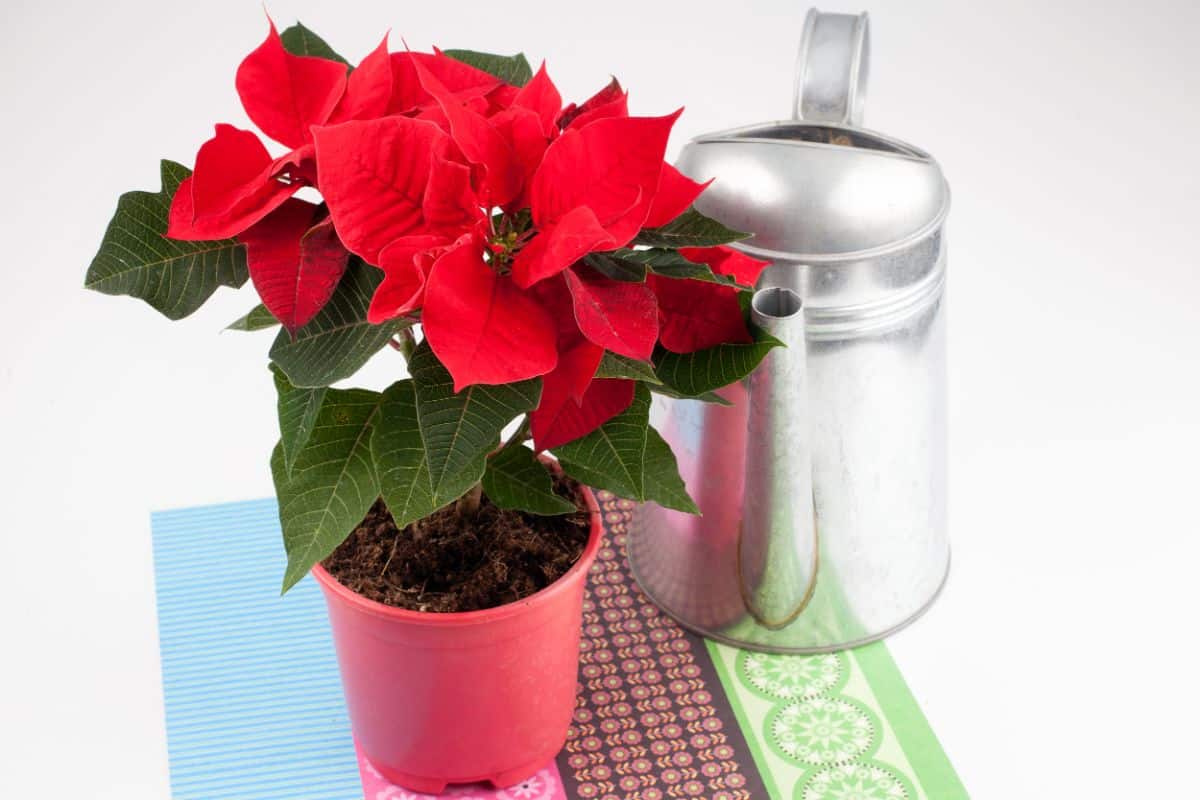
How much water is too much for poinsettias? How do you know when your poinsettia has had enough? How much is too little? What's the right amount of water for poinsettias?
Let’s find out.
Jump to:
How Often Should I Water My Poinsettia?
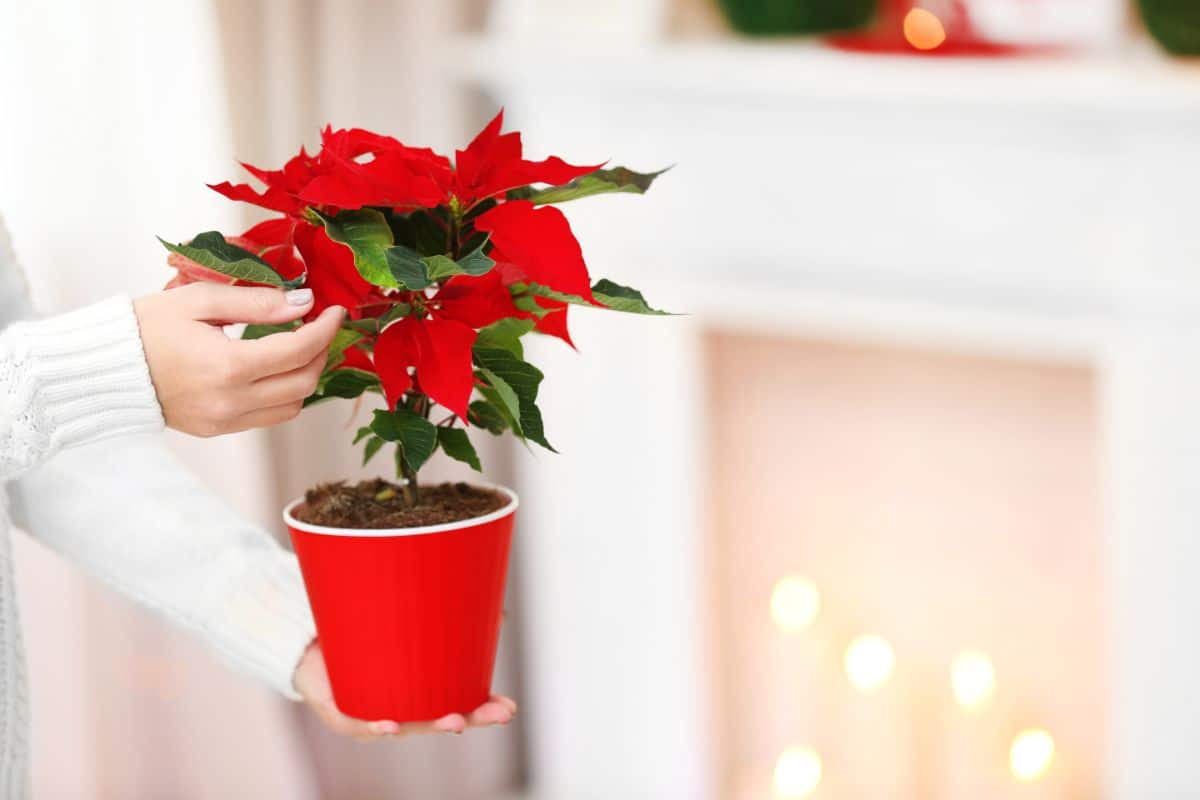
The short answer? You should water your poinsettia about once a week.
HOWEVER...
How often you need to water your poinsettia depends on a few factors. The biggest factor is the quality, absorbency, and water retention capacity of the potting soil it is planted in.
Changing the soil doesn’t usually make a lot of sense because most people consider poinsettias a seasonal plant that they only plan to keep for four to eight weeks during the Christmas season. It probably makes the most sense to work with the soil and pot the plant came in.
So, the more correct answer is to water your poinsettia based on its needs.
What is a poinsettia’s water needs?
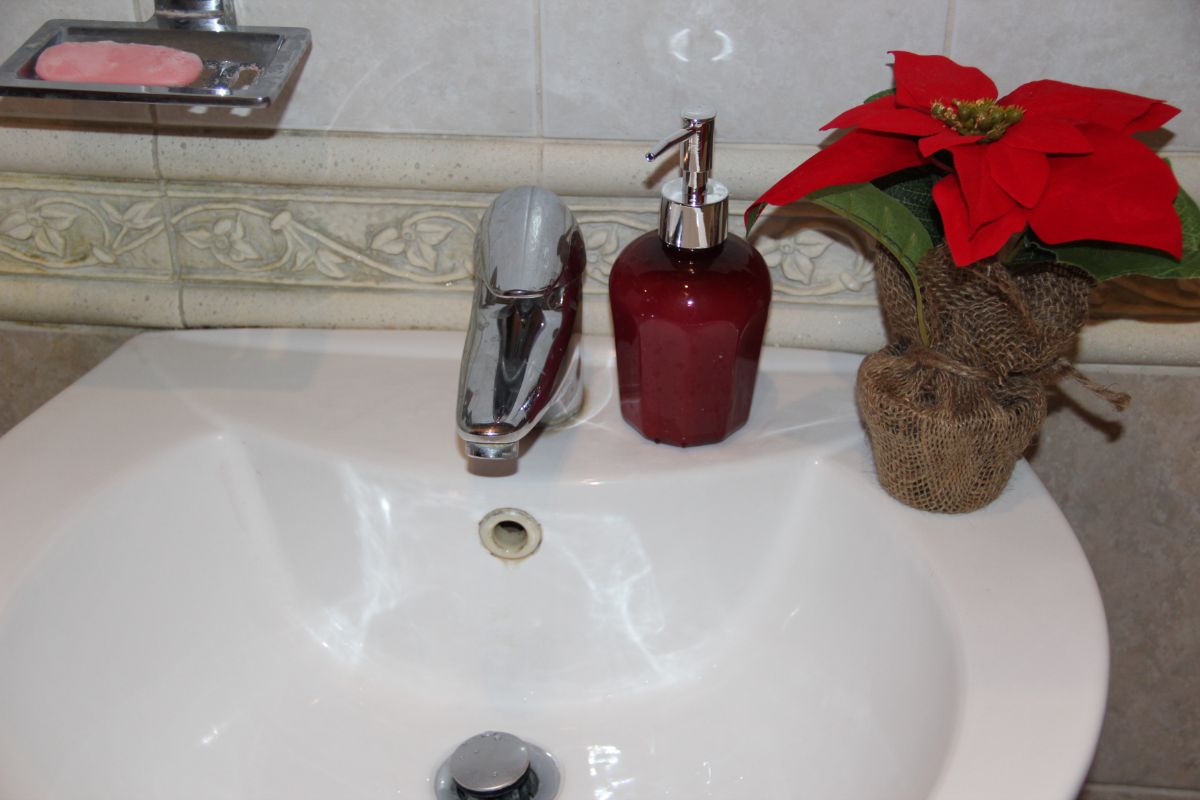
Poinsettias need to be allowed to mostly dry out before they are watered. There are two good ways to figure out if your poinsettia needs watering:
- Check the top of the plant’s potting soil. Press lightly with your finger. When the top of the soil feels dry to the touch, water your poinsettia.
- Lift the pot. If the pot feels light, it’s time to water your poinsettia again.
Even if the plant is only moist when you touch the soil, it’s not time to water it yet. Wait until the soil feels dry at the top.
There is a “best” way to water your poinsettia to give it the right amount of water without overdoing it and without creating rot problems.
The Right Amount and the Right Way to Water Your Poinsettia
Poinsettias prefer to have their water kind of all-at-once as opposed to frequent light watering.
A good soaking is the right amount of water for your poinsettia. Instead of watering it with a watering can like you do many house plants, it’s best to take your poinsettia to the sink and give it a good soaking. Run the water through until the soil is saturated, and the water runs out the drainage holes in the bottom of the pot. Let it sit until it is not dripping, and then return it to its place of honor.
Signs you’re overwatering your poinsettia.
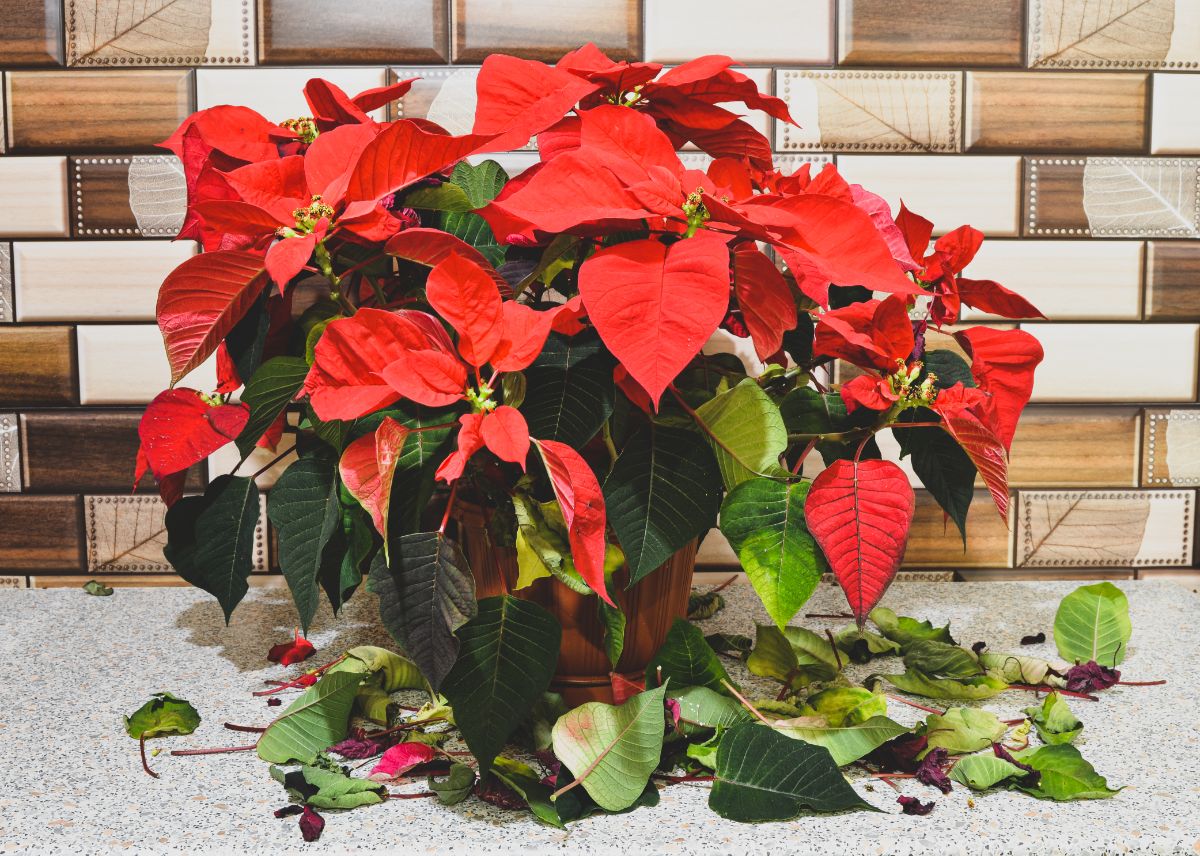
The most common sign that your poinsettia is being overwatered is the yellowing and dropping of leaves on the lower parts of the plant.
Sudden wilting and dying of the whole plant are also a sign of root rot and overwatering. By this point, the plant often cannot be salvaged. You may need to get another poinsettia and try again, this time armed with a little more knowledge and experience.
Signs you’re underwatering your poinsettia.
Drying, curling, or wilting leaves are signs that your poinsettia is not getting enough water. Though this sounds like the symptoms of overwatering, there is a difference.
Leaf loss from underwatering is different than a loss from overwatering in that it occurs all over the plant. Leaf drop from overwatering happens at the bottom of the plant but not usually on the upper leaves or colored bracts.
Other Tips for Watering Poinsettias
Don’t let water stand in the saucer.
Unlike most house plants, where it’s wise to let some water pool in the bottom saucer and let the plant uptake it later when it needs it, poinsettias don’t like standing in a pool of water. It keeps their soil and their roots too moist, and it doesn’t give them a break they need by letting the soil semi-dry out.
Make sure water can drain through decorative foils or coverings.
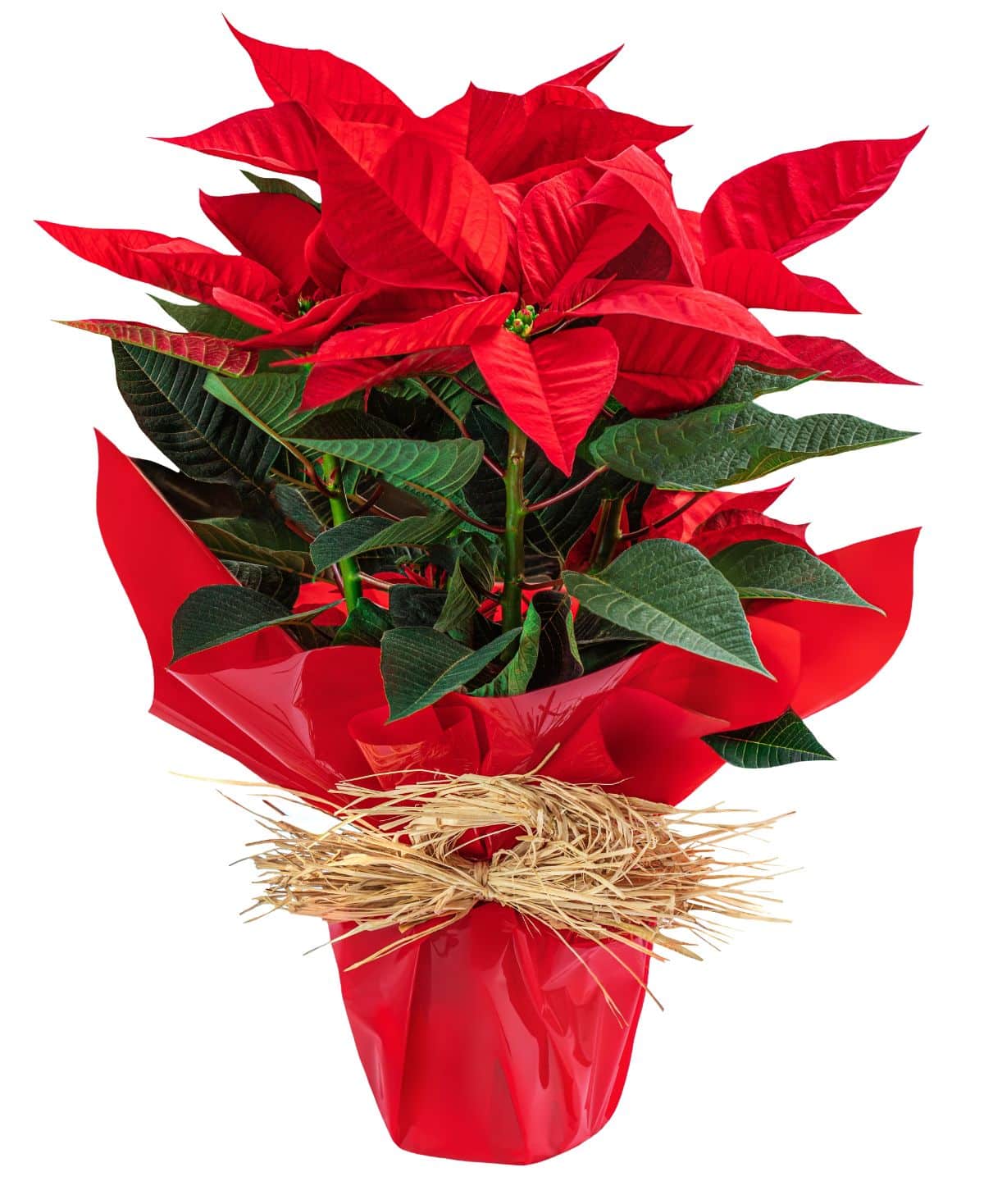
Poinsettias often come wrapped in a pretty, colored decorative plastic or foil. These coverings are really good at holding in water. The result is that the pots can’t drain the way they need to, and there is often standing water left in the bottom of the foil that acts the same as a plant saucer filled with drained water.
If you want to keep the decorative wrap on your poinsettia plant (or if you want to use one of your own design), just make sure that the pot can drain. You can cut holes in the bottom of the foil, or you can cut the bottom out completely. You can also take the foil off when you soak your plant, let the pot drain in the sink for a while, and then slip it back into the sleeve. Just don’t try to water your poinsettia with an impermeable covering on it.
Don’t water too much or too often.
Overwatering is the most common killer of poinsettias. Don’t water your poinsettia more often than is needed, and don’t give it more water than it needs (puddles of undrained water is more water than it needs).
Adjust your watering schedule to your home or office.
All homes and buildings are different climate-wise. Some are kept hotter, some cooler, some are well-humidified, and some are very dry (dry air is a common problem in heated buildings in winter). What’s needed in a warm or tropical winter climate will be a lot different than what is needed in a cool or cold northern climate.
While there are general guidelines that will suit most of us, we all have our own little home microclimates that make the needs of the plants in our homes a little different. Trust yourself and let your plant guide you. Don’t follow a rigid schedule of watering if that’s not what your poinsettia is asking for.

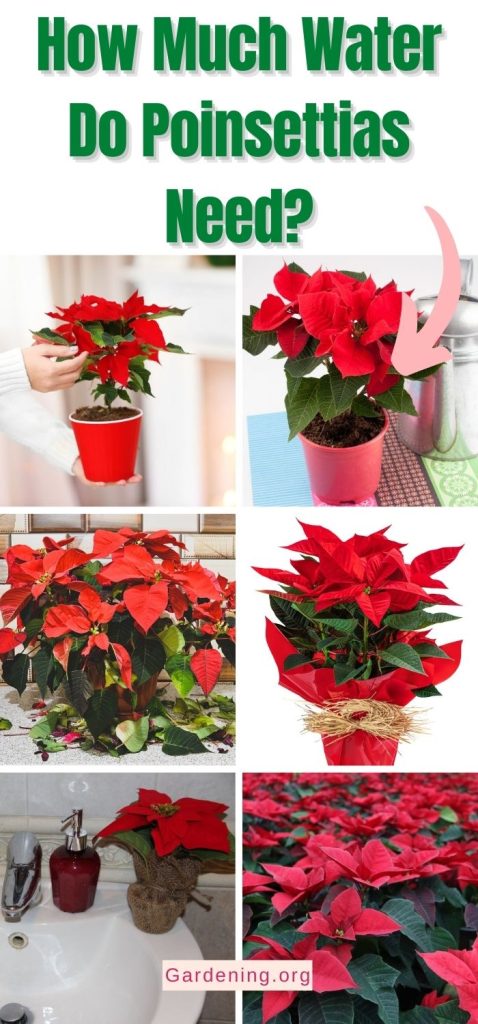
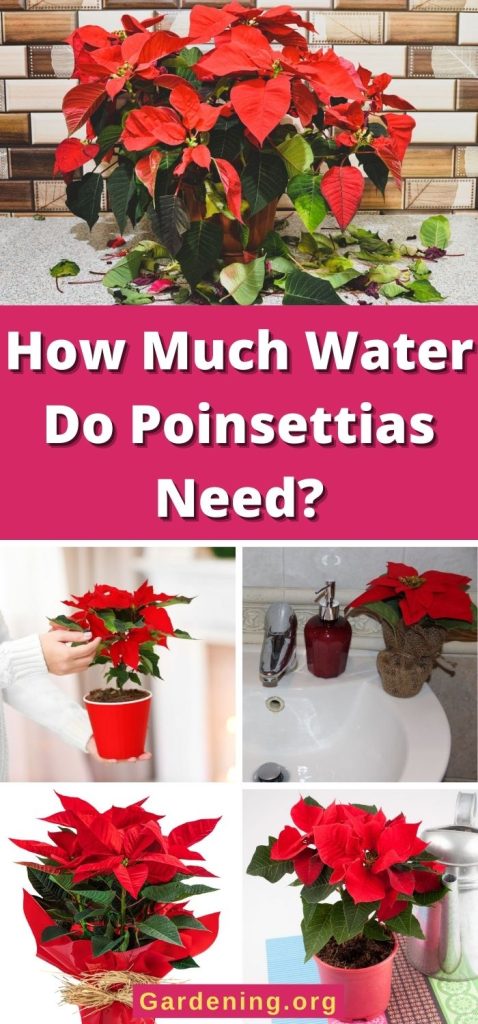
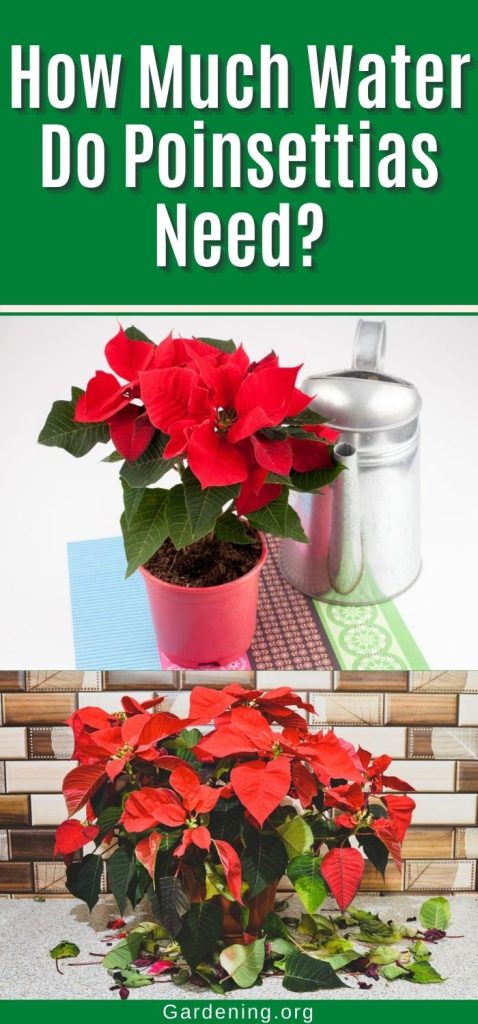
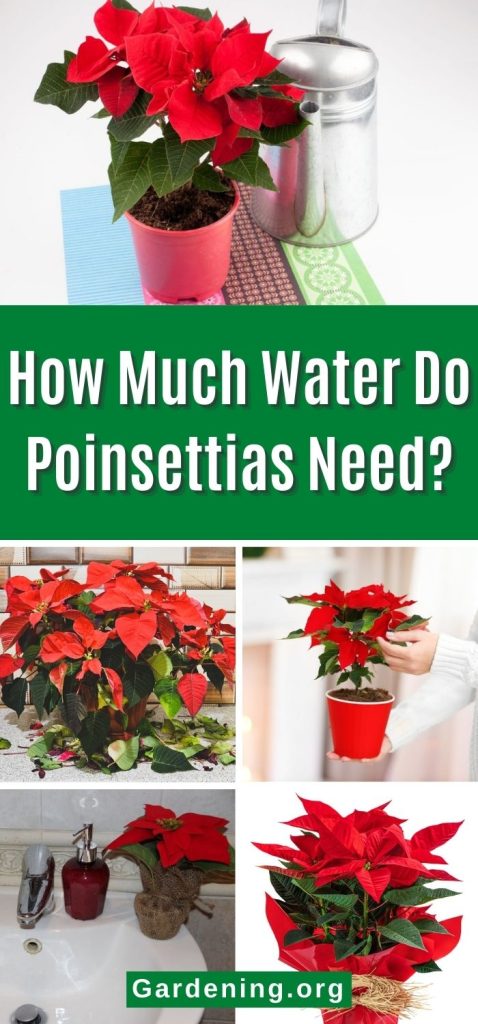
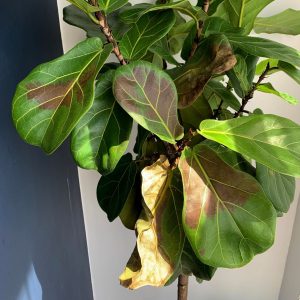
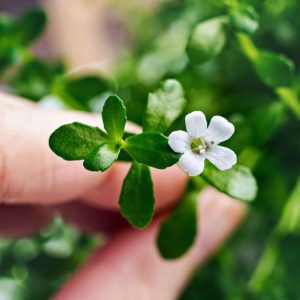
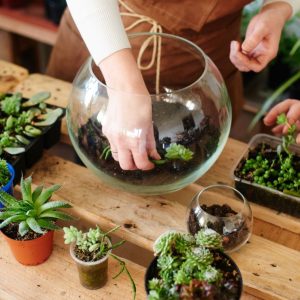
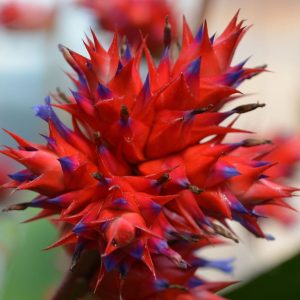
Ralph
Please stop calling them Poinsettia! Use one of the other names. Thank you.
Mary Ward
Hello Ralph and thanks for your input.
While it is true this rose goes by many other names, the name most recognizable to people, and therefore the best way to deliver information people need, is to go by their common name, Poinsettia.
We do love this "Christmas Flower" though. Anyone interested in some other names or the history of the name "Poinsettia", please check out these interesting facts from the University of Florida:
https://gardeningsolutions.ifas.ufl.edu/plants/ornamentals/five-facts-about-poinsettias.html
Marcia Riegle
I think Ralph may be annoyed by so many people call it a pointsetta instead of poinsettias. That bugs me too.